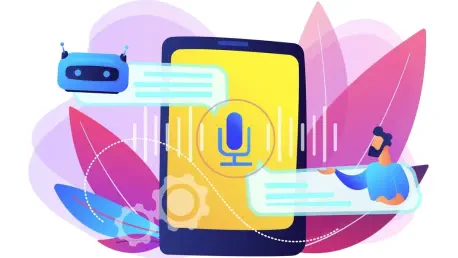I’m thrilled to sit down with Zainab Hussain, our retail expert and a seasoned e-commerce strategist with deep expertise in customer engagement and operations management. With years of experience navigating the evolving landscape of customer experience, Zainab recently attended Customer Contact Week (CCW) in Nashville, where she gained firsthand insights into the revolutionary changes driven by Conversational AI and voicebots. In this interview, we’ll explore the decline of frustrating old-school systems, the rise of intelligent voice agents, the concept of bionic contact centers, and the future of human-AI collaboration in customer service. Let’s dive into how these innovations are reshaping the way companies connect with their customers.
Can you share what drew you to attend Customer Contact Week in Nashville and highlight a moment or insight from the event that really stuck with you?
I was eager to attend CCW because it’s a hub for cutting-edge ideas in customer service, and I wanted to see how technology is transforming the space, especially in retail. What really stood out was the palpable excitement around Conversational AI. There was this collective realization that we’re moving beyond clunky, outdated systems into something far more intuitive. One session on voicebots blew me away—seeing demos of AI agents handling complex, multi-step issues in real-time made me think about how much this could change customer interactions for the better.
What made those old touch-tone IVR systems so frustrating for customers, and how did they shape perceptions of customer service?
Oh, those systems were a nightmare for so many reasons. You’d call in, and it felt like you were trapped in an endless loop of pressing numbers, only to be misunderstood or sent to the wrong department. They lacked any sense of personalization or understanding—it was like talking to a brick wall. For customers, this often set a negative tone right from the start, making them feel unheard or undervalued. It shaped a perception that companies didn’t care enough to make the process easy, which could erode trust before a human even picked up the phone.
How do you see the emergence of AI-powered voicebots transforming the customer service landscape for companies today?
Voicebots are a game-changer because they bring a level of understanding and responsiveness that older systems never could. They’re not just following scripts; they use advanced language models to grasp context, tone, and intent, which means they can tackle much more complicated issues on their own. For companies, this means faster resolutions, lower costs, and the ability to scale service without sacrificing quality. It’s about making customers feel heard from the first word, which can turn a routine call into a positive brand experience.
Can you paint a picture of what a ‘bionic contact center’ looks like, where humans and AI collaborate seamlessly?
Absolutely. Imagine a contact center where AI handles the bulk of initial interactions—greeting the customer, pulling up their account details, diagnosing the issue, and even solving straightforward problems. Then, when something needs a human touch, like a policy exception or a deeply emotional complaint, the AI smoothly hands off the call with a full summary of the conversation. The human agent steps in already informed, ready to focus on empathy and complex problem-solving. It’s a partnership where AI takes on the repetitive tasks, and humans bring the warmth and judgment that tech can’t replicate.
With advancements in overcoming issues like latency and background noise, how do these technical improvements impact the everyday customer reaching out for help?
These improvements are huge for the average customer. Latency used to make conversations feel stilted—those awkward pauses made you wonder if the system even heard you. Now, voicebots respond almost instantly, and they can handle interruptions just like a human would. Plus, with better noise cancellation and accent recognition, a customer calling from a noisy street or with a unique way of speaking isn’t misunderstood. It makes the interaction feel natural and effortless, which is often the difference between a frustrating call and a satisfying one.
Between full call automation and human-AI collaboration, which approach do you think will drive greater customer satisfaction in the coming years?
That’s a tough one, but I lean toward human-AI collaboration as the bigger driver for satisfaction. Full automation is fantastic for quick, routine tasks—think checking an order status or resetting a password—and it cuts wait times dramatically. But when issues get messy or emotional, customers still crave that human connection. Collaboration lets AI streamline the process and empower agents to focus on what matters most: building trust and solving unique problems. I think that balance will resonate more deeply with customers over time.
Looking ahead, what’s your forecast for the role of voicebots and Conversational AI in shaping the future of customer experience?
I see voicebots becoming even more proactive and intelligent in the next few years. We’re moving toward what’s called agentic AI, where these systems can dynamically pull from multiple tools and data sources to solve problems on the fly, without rigid programming. My forecast is that this will make customer service not just reactive, but predictive—anticipating needs before a customer even asks. But the key will be keeping the human element at the core. If we can blend AI’s speed with genuine empathy, we’re looking at a future where every interaction feels personal, effortless, and truly supportive.









